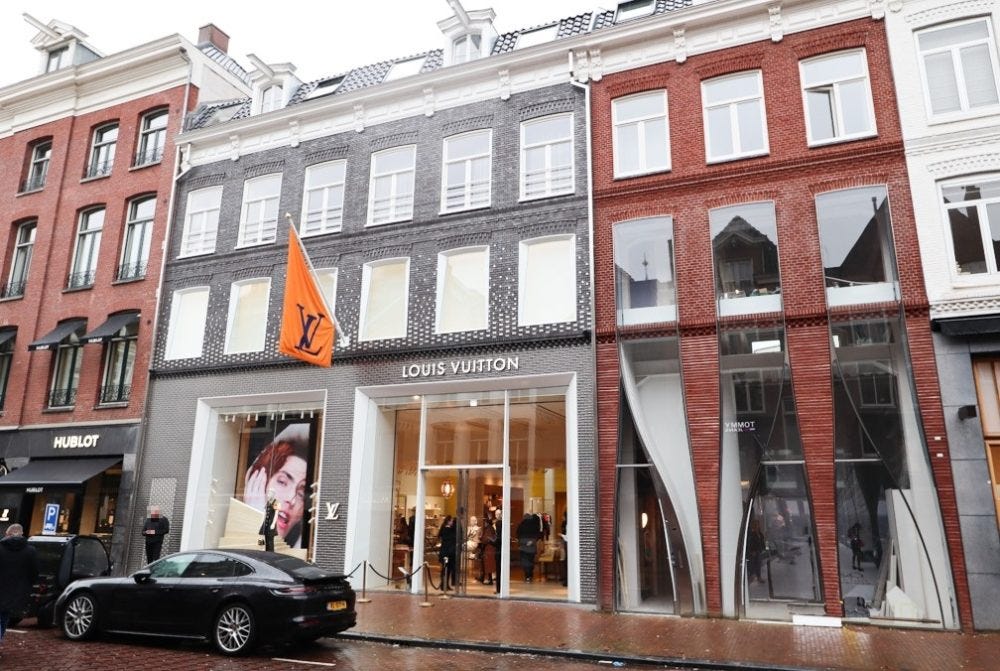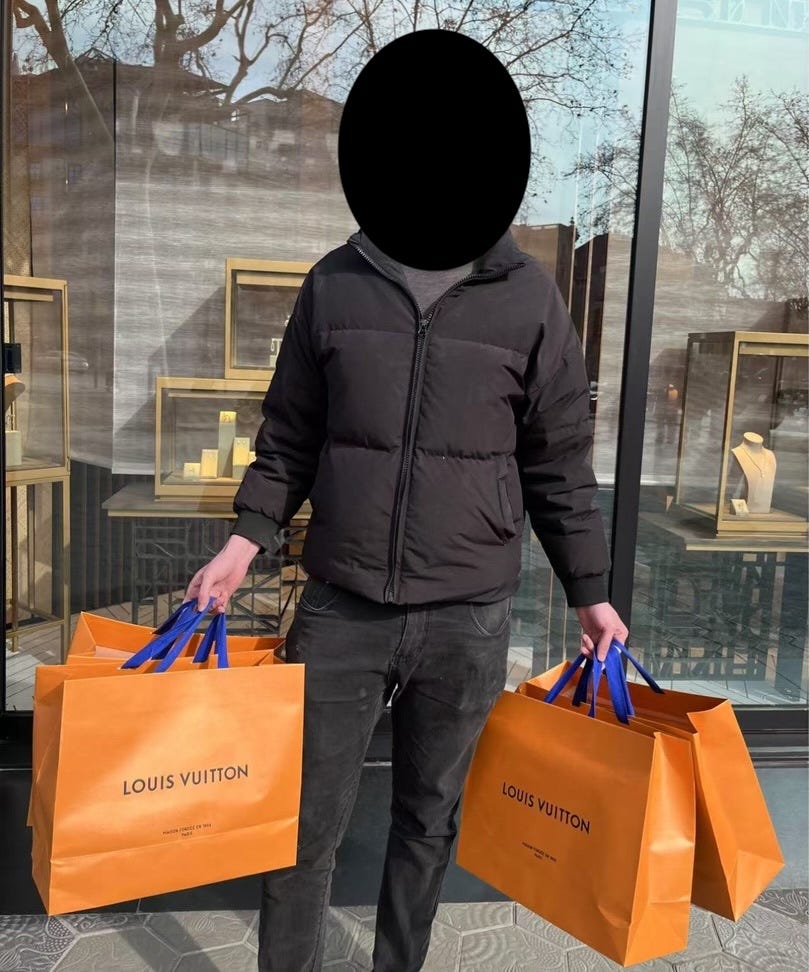Exposing the luxury money laundromat
Dutch prosecutors have named Louis Vuitton in a €3 million money laundering case which links one of the largest luxury brands to the $57 billion grey market, which is often funded by criminality
Who can actually afford to buy a £3,000 handbag? Organised criminal groups, say Dutch prosecutors, who are investigating Louis Vuitton’s Netherlands subsidiary in a €3 million money laundering case. The case centres on a woman named only as “Bei W”, a Chinese national who is alleged to have spent millions on luxury handbags in order to clean dirty money made from crime, along with two other defendants who are said to have helped her.

Louis Vuitton is being investigated for potentially violating money-laundering regulations in the case. The prosecutors allege that the suspicious purchasing patterns should have been identified by the Louis Vuitton shop, even though the defendant made sure to spend just under the €10,000 cash threshold which triggers mandatory reporting obligations.
Prosecutors say the shopping spree was funded by another person who collected the proceeds from organised crime, passed them on to buyers, who then laundered them via Louis Vuitton purchases. The handbags were sent back to China and Hong Kong, where they could be sold for a profit and, crucially, without any clear link to the criminal activities which paid for them.
This unprecedented legal development is one of the most public exposés so far of the dark underbelly of daigou, the common practice of Chinese shoppers buying luxury goods on behalf of others outside China, a favourite topic of Dark Luxury.
Regular readers will be familiar with our previous investigations which identified similar purchasing behaviour in the Barcelona Louis Vuitton store, where Chinese buyers used student mules to secure dozens of handbags under €10,000. Our sources said this amounted to roughly half of the store’s sales over a two year period.

Daigou, which literally means to “buy on behalf of”, has grown into a $57 billion annual grey market. It evolved from an ancient trading practice into a sophisticated criminal enterprise exploiting luxury brands, tax systems and taking advantage of students across the globe.
Dark Luxury spoke to Laurence Howland, a financial investigator with three decades of experience at the UK’s HMRC including time as fiscal crime liaison officer at the British embassy in Beijing. He says the story of daigou, and the shadow banking variant which often accompanies it called hawala, begins centuries ago on the ancient Silk Road, where informal value transfer systems first emerged to facilitate trade across vast distances and hostile territories.
Money from paid subscribers goes directly to support more Dark Luxury investigations:
From the Silk Road to modern day daigou
Long before Louis Vuitton existed, merchants along the Silk Road developed hawala, an informal banking system that moved value across borders without physically transferring money. Hawala is mentioned in the Quran as “exchange of debts”, with Muhammad himself urging traders to act honestly using the technique. Under ancient hawala, a trader in Constantinople could deposit silver with a hawaladar (an informal money broker in the system) and receive a coded message. Weeks later, a partner in Beijing could present that code and collect the equivalent value in local currency, minus a commission.
This system, born of necessity in an era of bandits and unreliable governments, required only trust and a network of relationships, and didn’t require banks, paperwork or any government oversight. Hawala became the foundation for what academics call Informal Value Transfer Systems. In China, similar practices evolved into underground banking. Together, these laid the groundwork for modern daigou.
“Daigou represents the modern evolution of these ancient informal value transfer systems”, said Howland. “The fundamental mechanics haven’t changed. It’s still about moving value across borders while circumventing official channels”.
Daigou’s modern story began not only with the Silk Road but also in places like Manzhouli, a remote city on the Russian border. In the 1980s and 1990s, Chinese shoppers would cross into Russia to buy goods unavailable at home, then resell them in local markets. Over time, what started as personal errands became organised trade networks, an early echo of today’s globalised daigou system.



